Below are some examples of the facilities we have available locally at
Queen's University. As well as these, we have other facilities in Sudbury
associated with SNOLAB.
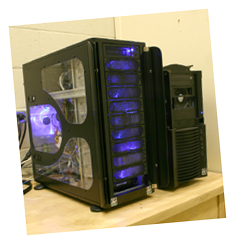
 Computing
Computing
Our computing facilities consist of a linux cluster of computers, which we
use for data analysis, email and general computing. We have access to a large
linux cluster at SNOLab, which
is used primarily for SNO data analysis,
and the HPCVL parallel computing facility at Queen's (see
http://www.hpcvl.org).
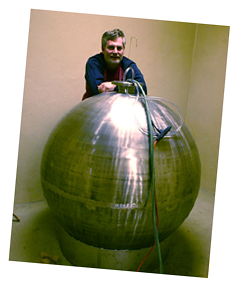
Neutron Source

We have a strong AmBe neutron source, which we use primarily for
undergraduate teaching. However, it has often proved useful to be able to
neutron activate samples, either to produce sources or to do elemental analysis.
The flux of neutrons in the source is about 106
neutrons/cm2/sec. For more intense fluxes (up to about
1011 neutrons/cm2/sec), we can cross the Cataraqui River
to the Royal Military College and use their Slowpoke reactor.
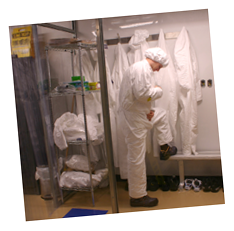
 Clean Rooms
Clean Rooms
We have two clean rooms, which are necessary to prevent contamination of
equipment by dust. Dust is somewhat radioactive, and often contains uranium and
thorium at about the part per million level. When we built the
SNO detector, we were allowed less
than 1 gram of dust, contained in all the nooks and crannies in our detector.
Our clean rooms allow us to fabricate materials for deployment in
SNOLAB.

Counting Stations

We have several counting stations, which are used to measure radioactivity
from various materials. Since we are typically worried about natural
radioactivity leaking into our apparatus, we spend a lot of time counting radon
and radon daughters. We also look at alpha-beta coincidences and gamma
rays.
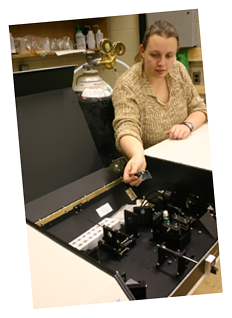
 Laser Lab
Laser Lab
We have nitrogen pumped lasers, spectrophotometers and scattering chambers.
These are required to measure the optical properties of detector components, and
to measure the purity of scintillating solutions. One project that we have
done recently is to determine the optical properties of neodymium nanoparticles
suspended in liquid scintillator. Such particles could be used for a double
beta decay experiment in the SNO+
detector.
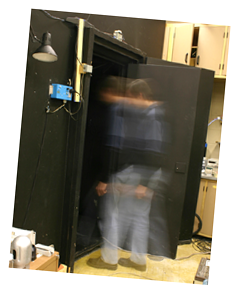
Darkrooms

We have two darkrooms that we use for testing photomultiplier tubes and
making different optical measurements. These were originally constructed for
testing each of the 10000 photomultipliers that went into the
SNO detector. Since then, they
continue to be used for testing other apparatus.
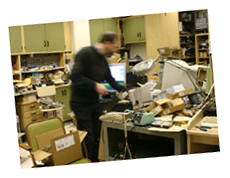
 Electronics
Electronics
Particle physics relies on technology to measure pulses in a variety of
detectors. We have a variety of electronics for measuring and digitizing
pulses. For SNO, we built a custom
CMOS chip in collaboration with the University of Pennsylvania and Canadian
Microelectronics Corporation. We set up and tested all of the chips, and then
the boards that they populated. We have an electronics technician, Steve
Gillen, who works for the department.

Metal Shops

We have two machine shops. There is a staff/student shop which is accessible
to all who have taken our introductory shop course, and a full shop with two
machinists to make things professionally. The shops include a CNC mill,
conventional mills, lathes, saws, grinders, and other machine tools.
If you have questions or comments about the content of this website, please contact
qusno@sno.phy.queensu.ca.